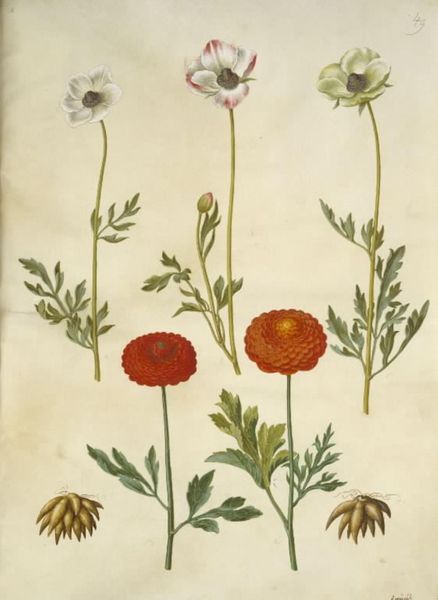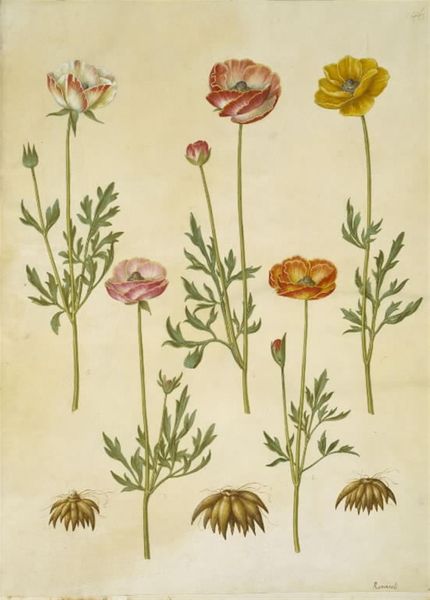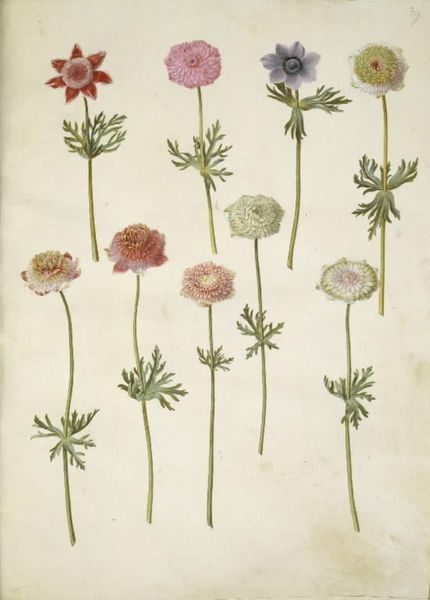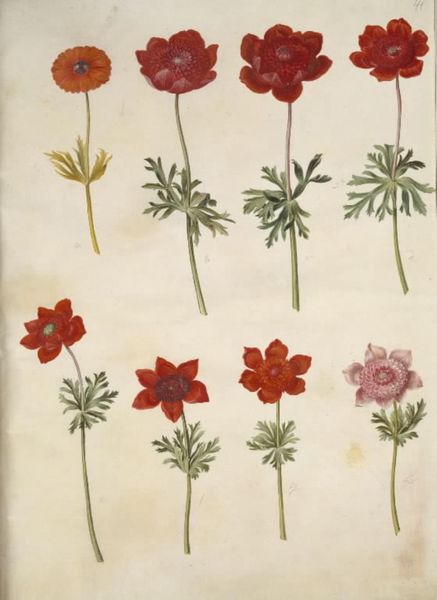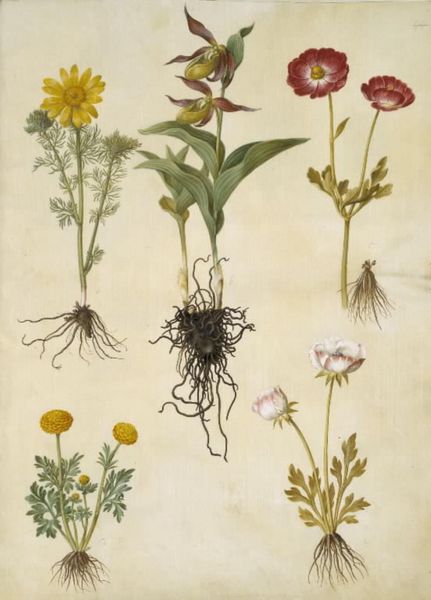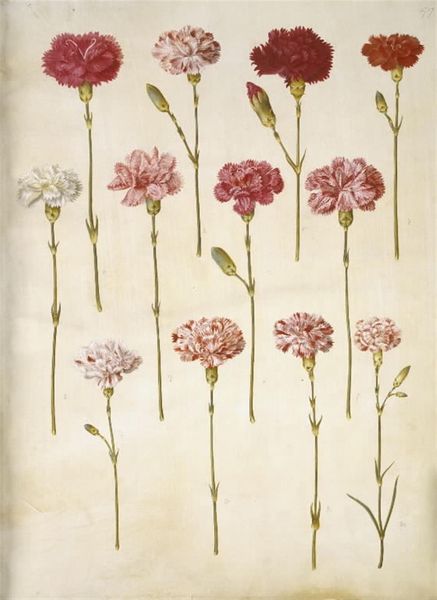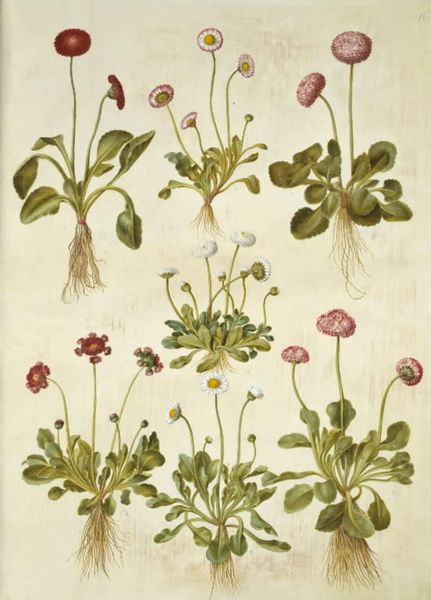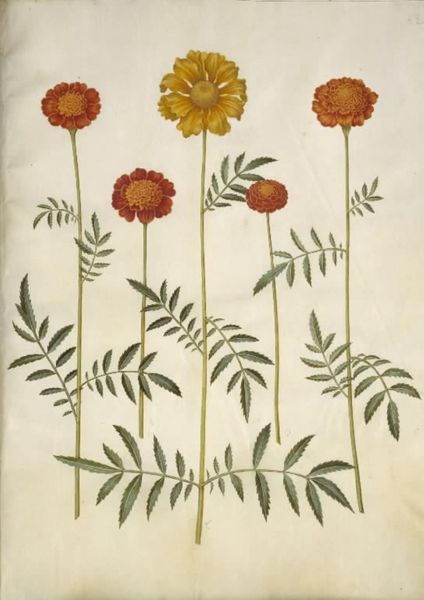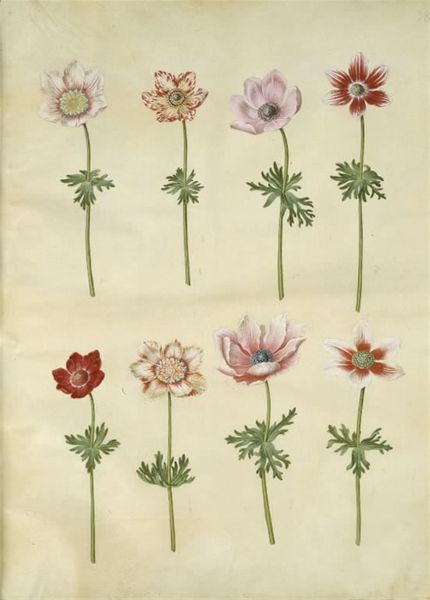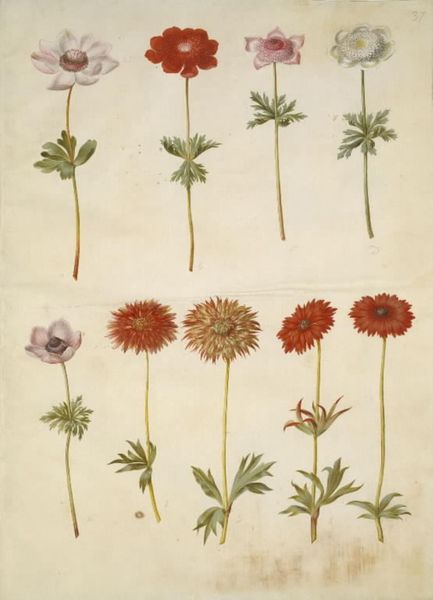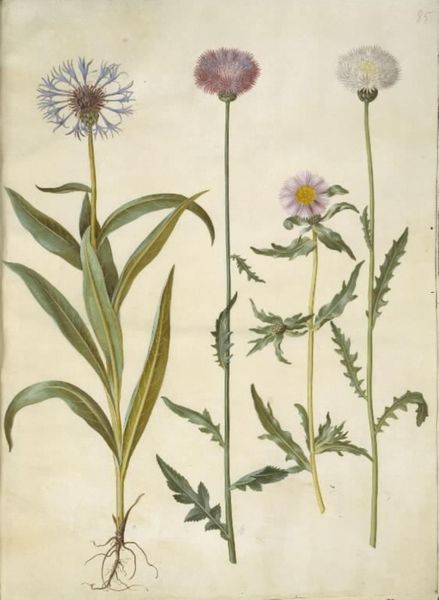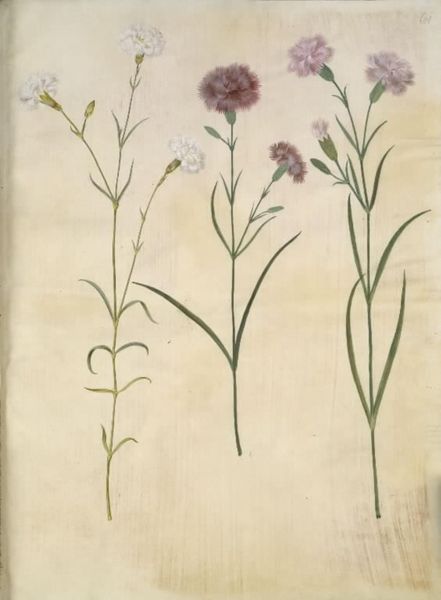
Ranunculus acris (guldknap-ranunkel); Anemone nemorosa (hvid anemone); Ranunculus illyricus (steppe-ranunkel); Ranunculus asiaticus (have-ranunkel) 1649 - 1659
0:00
0:00
drawing, gouache, watercolor
#
drawing
#
water colours
#
gouache
#
watercolor
#
watercolour illustration
#
naturalism
#
watercolor
Dimensions: 505 mm (height) x 385 mm (width) (bladmaal)
Hans Simon Holtzbecker made this botanical study of ranunculus and anemone flowers with watercolor and gouache on vellum in the 17th century. Holtzbecker’s choice of materials speaks to a period deeply interested in the natural world. Vellum, a parchment made from animal skin, gives the painting a subtle texture, while the layering of watercolor and gouache allows for both transparency and opacity. The work's inherent qualities of color and form give the flowers a lifelike presence, inviting close inspection. The artist's skill in rendering the delicate petals and leaves captures the botanical specimens with scientific precision. Holtzbecker was part of a tradition of artists employed by wealthy patrons, like royalty, to document rare and exotic plants, reflecting both a love of nature and an assertion of status through consumption. By focusing on the materials and context of Holtzbecker's botanical study, we can appreciate the complex interplay between art, science, and society in the 17th century.
Comments
No comments
Be the first to comment and join the conversation on the ultimate creative platform.
